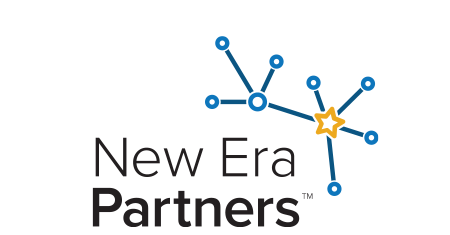There must be an improved worldwide food traceability system to help ensure the safety and quality of foods produced by a global supply chain that continues to grow in size, scope, and complexity. Industry must embrace sophisticated electronic technologies to track and trace the foods and ingredients it produces. Traceability systems must be interoperable to function effectively across borders.
In short, everyone involved in the production and distribution of food and its ingredients has an important role going forward in the shared mission to protect consumers in every nation from contaminated foods.
These are among the findings of a recent report, entitled “Food Traceability: Current Status and Future Opportunities,” released in September by the Council for Agricultural Science and Technology (CAST) and the Institute of Food Technologists (IFT). The authors are renown food science, food traceability and food safety experts. In addition to Andrew Kennedy, Principal Traceability Advisory at New Era Partners, they include:
- Robert Gravani, Chair, Professor Emeritus, Department of Food Science, Cornell University
- Sara Bratager, Senior Food Safety & Traceability Scientist, IFT
- Jennifer McEntire, Founder, Food Safety Strategy
- Julie McGill, VP Supply Chain Strategy and Insights, Trustwell
- Allen Sayler, Managing Partner, Center for Food Safety and Regulatory Solutions
This report is an overview of the past, present and future of food traceability, focusing on its significance, the role of technology, and best practices to achieve end-to-end traceability in the food system. The authors note that despite advances in food safety in the public and private sectors, outbreaks of foodborne illness remain a serious public health problem.
Frank Yiannas, former Deputy Commissioner for Food Policy and Response in the U.S. Food and Drug Administration, who recently joined iFoodDS’ board of directors, wrote the report’s forward. He states, “Better food traceability can’t wait. Our ability to provide safe, affordable, and sustainable food for this generation and the next depends on it.”
Below we take a look at key conclusions contained in this report, which is posted on the CAST website.
The Importance of Traceability
Traceability is an important business and food safety tool that will help a company trace forward and back across the full supply chain for visibility and transparency, facilitate process optimizations and efficiencies, and provide powerful data that enables proactive decision-making and food safety incident prevention.
Food Safety is a Critical Application
That said, although food traceability also supports such uses as sustainability efforts, and product differentiation, food safety remains one of the most critical applications. Food traceability will speed both the identification of the source of a contaminated product and the implementation of targeted corrective actions, like removing the specific product from shelves and not making blanket decisions that can have a devastating effect on foods and producers that are innocent bystanders. The report gives as examples the 2006 outbreak of E. coli O157:H7 that resulted in all spinach produced, regardless of source, being pulled from grocery stores. This happened again in 2018 with another multistate outbreak of E. coli O157.H7 in which consumers were advised to avoid eating all romaine lettuce, regardless of source.
Traceability Systems Must Be User-Friendly and Interoperable
Although its value is clear, the authors note that a traceability system must have certain qualities to be accepted by all stakeholders in the food supply chain. It must be simple, user friendly, globally accepted, and be easily incorporated into current industry practices and systems. The design should be open and interoperable, with each supply chain partner having the ability to select methods and technologies that suit their operations.
The bottom line is that interoperable systems must be able to exchange product tracking information accurately, efficiently, and consistently among trading partners.
The Benefits of Traceability
Mr. Yiannas addresses the benefits of a more traceable food system:
- Being able to trace a contaminated food to its source during an outbreak, identifying the food earlier in an epidemic curve and facilitating its removal from commerce.
- Allowing more timely and relevant root cause investigations that could strengthen the ability to prevent future, similar, recurring outbreaks.
- Getting a favorable return on this investment.
And “favorable” appears to be an understatement. Mr. Yiannas references a cost/benefit analysis conducted by FDA. The agency found that the average number of days needed to identify a product’s source without the traceability lot codes required by the Food Traceability Rule (FSMA 204) is about 35, but that number shrinks to six with the use of a traceability lot code.
This could save an estimated $897 million a year in public health costs and potentially prevent 108,000 foodborne illnesses.
The report further notes that from a business perspective, the cost of prevention is a fraction of the potential financial impact of a food safety incident. The cost of a recall and related expenses such as litigation, lost sales, impact on market value, and brand reputation could reach hundreds of millions of dollars.
Best Practices
The report highlights best practices that apply to the science of traceability as a whole:
- Scope and objective: Clearly defined objective and data management practices that align with the objective are crucial for the success of a traceability system.
- Roles and responsibilities: It is important to define and communicate who needs to be responsible, accountable, consulted, and/or informed of the tasks required of system stakeholders.
- Data standardization: System-wide alignment around what data to collect based on the defined scope and objective, and how to format and exchange that data between systems enables interoperability and eases the burden of traceability implementation.
- Data digitization and fit-for-purpose technology: Digitization allows entities to take advantage of data analysis tools and fully reap the benefits of traceability data. It is important to choose technology that aligns with the objective of the system and meets the needs of both data collectors and data users.
- Comprehensive investment: Traceability requires continued, long-term investment beyond initial implementation in areas that include training, data governance and technology maintenance.
- Data security: Traceability systems should utilize robust data security protocols to protect stakeholders and their sensitive data.
Technology Drivers
A primary focus of the report is to investigate and discuss the development and use of various technologies to enable the traceability of food products. The authors make the point that traceability technology relies on good data from trusted sources, digitized to fuel today’s complex supply chains more efficiently and effectively.
The food industry has seen more companies moving to automated data collection, digitization of records and data sharing. While the report does not cite specific cases, one example is iFoodDS Trace Exchange™ (with IBM Food Trust™), which helps companies capture, store, share and monitor their data for compliance with FSMA 204.
Drivers for technology adoption come from many different sources, including:
- Regulations and standards, such as the Food Safety Modernization Act (FSMA), including Section 204, and Foreign Supplier Verification Programs, as well as regulations from other countries and standards from international organizations. Mr. Yiannas credits FSMA 204 with creating standards that are the equivalent of creating a universal language of food traceability.
- Initiatives, such as the FDA’s New Era of Smarter Food Safety, the Global Dialogue on Seafood Traceability, the Produce Traceability Initiative, IFT, and GS1 US traceability programs and resources.
- Customer mandates that direct suppliers to various technologies, including blockchain and cloud-based traceability solutions, IoT sensor technology, RFID for automated data capture, and Artificial Intelligence for enhanced data insights and reporting. Many programs follow GS1 standards for traceability, using GS1-128 barcoding, electronic data interchange and global data synchronization network.
- Corporate objectives in areas such as transparency, sustainability, and supply chain visibility.
- Consumer demands propelled by factors that include environmental concerns, more sustainable business practices and products that have a lower carbon footprint. Consumers want to know more about the foods they eat, where they come from, and the people and practices behind them.
Looking Beyond Traceability Benefits
Industry research studies found that traceability data sets can contain value well beyond their initial purpose. This includes supply chain optimization. For example, one operator was able to show savings of $1.3 million per year through improved truckload optimization and materials handling related to traceability efforts that discovered inaccuracies in product records.
The data can also help minimize the impact of product recalls by:
- changing the number of products to be recalled and reducing the time spent finding and removing them from the supply chain;
- reducing waste associated with unnecessary removal;
- eliminating unnecessary communications with unaffected distributors and restaurants/stores; and
- protecting brand reputation
Traceability is a Collaborative Space
Looking at the overall report, the authors include a quote that captures the essence of their message. “Traceability is not a competitive space, it’s a collaborative space. Everyone must participate for it to work,” (Tokar and Swink 2018).
For more information on how to participate in this work, visit iFoodDS’ FSMA Rule 204 Information Hub and explore the resources available via New Era Partners.


